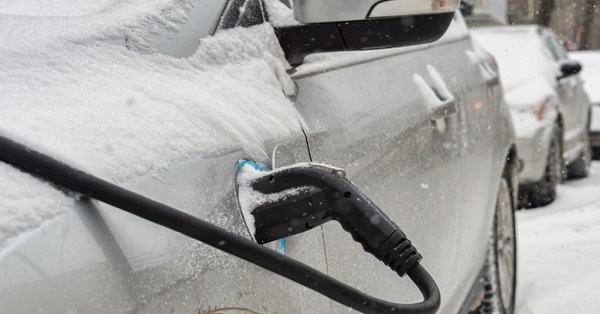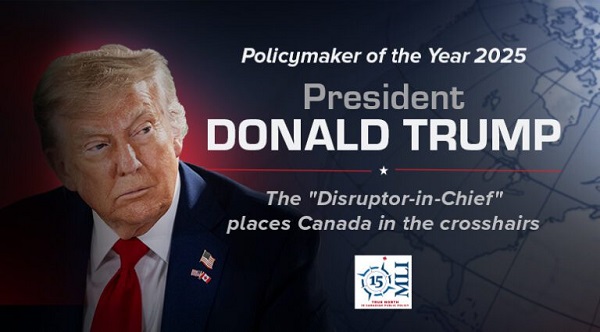Automotive
Family values and a depth of knowledge set Bird Automotive apart from all others

The moment you walk through the doors of our shop on Yellowhead Trail, you’ll feel a difference. Maybe you’ll relax a bit, knowing that your vehicle and you and are in good hands. You’ll probably meet Max, a 2 year old Doodle who hangs out at the shop with us most days and keeps us all smiling.

First and foremost, Bird Automotive is a family business. Our staff have been with us for years and there likely isn’t an automotive project we haven’t seen. We’ve been operating since 1994 and we service all types of vehicles. We tend to specialize in European brands, but our customers are very diverse. Some come in looking for some love for their 1995 Ford Escape, hoping to get a few more years of life out of it. Others bring in their prized BMW’s, Audi’s, and Porsche’s, knowing we understand their cars very well and will give them the very best service available. We recently re-built a V12 for a customer’s rare 1990 BMW 850 – a project most shops like ours would be hesitant to take on. We nailed it, and the customer was thrilled.
We are a friendly, resourceful group. We like challenges, but above all, we like happy customers who appreciate quality work at a fair price.
The most important thing you can do for your vehicle? Maintain it. Preventive maintenance is a schedule of planned maintenance actions. Performed properly, we can help your vehicle to deliver peak performance and reduce the risk of costly breakdowns and failures.
Automotive Tune Up
Traditional tune-ups of years gone by involved changing the spark plugs, cap and rotor while tweaking the carburetor.
 Automotive technology has come a long way, and so have tune-ups. Modern tune-ups start with a complete system scan identifying any recorded errors or issues and continue on to fuel injector cleaning, electronic system and sensor analysis, ignition system testing and comprehensive performance checks.
Automotive technology has come a long way, and so have tune-ups. Modern tune-ups start with a complete system scan identifying any recorded errors or issues and continue on to fuel injector cleaning, electronic system and sensor analysis, ignition system testing and comprehensive performance checks.
Scheduled tune-ups help ensure your vehicle will perform at peak performance level, year after year, while reducing the possibility of road side break downs and costly repairs.
Other benefits of properly maintaining your vehicle include longer service life, greater resale value and better fuel efficiency.
Tune-up Services include:
Diagnostic Scans
Oil Change: Synthetic or Mineral
Automotive Computer Services
Emissions: Inspections, Failures, and Repairs
Fuel System Fuel Injection Services
A/C and Heat Service and Repair
Check Engine Light Diagnostics
Ignition System and Spark Plugs
Air Induction and Air Filter
“..The staff at BIRD AUTOMOTIVE are passionate about automobiles and take real pride in the quality of their work. We like to treat our customers as family, and family always takes care of itself…”
Call now to book an appointment for your vehicle at 780-496-9497. We are located at 9164 Yellowhead Trail NW in Edmonton, and are open Monday to Friday 8am – 5:30pm.We are a Certified OOP inspection facility by the Alberta provincial government.
Automotive
Canada’s EV gamble is starting to backfire

Things have only gone from bad to worse for the global Electric Vehicle industry. And that’s a problem for Canada, because successive Liberal governments have done everything in their power to hitch our cart to that horse.
Earlier this month, the Trump Administration rolled back more Biden-era regulations that effectively served as a back-door EV mandate in the United States. These rules mandated that all passenger cars be able to travel at least 65.1 miles (and for light trucks, 45.2 miles) per gallon of gasoline or diesel, by the year 2031. Since no Internal Combustion Engine (ICE) vehicle could realistically conform to those standards, that would have essentially boxed them out of the market.
Trump’s rolling them back was a fulfillment of his campaign promise to end the Biden Administration’s stealth EV mandates. But it was also a simple recognition of the reality that EVs can’t compete on their own merits.
For proof of that, look no further than our second bit of bad news for EVs: Ford Motor Company has just announced a massive $19.5 billion write-down, almost entirely linked to its aggressive push into EVs. They’ve lost $13 billion on EVs in the past two years alone.
The company invested tens of billions on these go-carts, and lost their shirt when it turned out the market for them was miniscule.
Ford’s EV division president Andrew Frick explained, “Ford is following the customer. We are looking at the market as it is today, not just as everyone predicted it to be five years ago.”
Of course, five years ago, the market was assuming that government subsidies-plus-mandates would create a market for EVs at scale, which hasn’t happened.
As to what this portends for the market, the Wall Street Journal argued, “The company’s pivot from all-electric vehicles is a fresh sign that America’s roadways – after a push to remake them – will continue to look in the near future much like they do today, with a large number of gas-powered cars and trucks and growing use of hybrids.”
And that’s not just true in the U.S. Across the Atlantic, reports suggest the European Union is preparing to delay their own EV mandates to 2040. And the U.K.’s Labour government is considering postponing their own 2030 ICE vehicle ban to align with any EU change in policy.
It’s looking like fewer people around the world will be forced by their governments to buy EVs. Which means that fewer people will be buying EVs.
Now, that is a headache for Canada. Our leaders, at both the federal and provincial levels, have bet big on the success of EVs, investing billions in taxpayer dollars in the hopes of making Canada a major player in the global EV supply chain.
To bolster those investments, Ottawa introduced its Electric Vehicle mandate, requiring 100 per cent of new light-duty vehicle sales to be electric by 2035. This, despite the fact that EVs remain significantly more expensive than gas-and-diesel driven vehicles, they’re poorly suited to Canada’s vast distances and cold climate, and our charging infrastructure is wholly inadequate for a total transition to EVs.
But even if these things weren’t true, there still aren’t enough of us to make the government’s investment make sense. Their entire strategy depends on exporting to foreign markets that are rapidly cooling on EVs.
Collapsing demand south of the border – where the vast majority of the autos we build are sent – means that Canadian EVs will be left without buyers. And postponed (perhaps eventually canceled) mandates in Europe mean that we will be left without a fallback market.
Canadian industry voices are growing louder in their concern. Meanwhile, plants are already idling, scaling back production, or even closing, leaving workers out in the cold.
As GM Canada’s president, Kristian Aquilina, said when announcing her company’s cancellation of the BrightDrop Electric delivery van, “Quite simply, we just have not seen demand for these vehicles climb to the levels that we initially anticipated…. It’s simply a demand and a market-driven response.”
Prime Minister Mark Carney, while sharing much of the same environmental outlook as his predecessor, has already been compelled by economic realities to make a small adjustment – delaying the enforcement of the 2026 EV sales quotas by one year.
But a one-year pause doesn’t solve the problem. It kicks the can down the road.
Mr. Carney must now make a choice. He can double down on this troubled policy, continuing to throw good money after bad, endangering a lot of jobs in our automotive sector, while making transportation more expensive and less reliable for Canadians. Or he can change course: scrap the mandates, end the subsidies, and start putting people and prosperity ahead of ideology.
Here’s hoping he chooses the latter.
The writing is on the wall. Around the world, the forced transition to EVs is crashing into economic reality. If Canada doesn’t wake up soon, we’ll be left holding the bag.
Automotive
Ford’s EV Fiasco Fallout Hits Hard


From the Daily Caller News Foundation
I’ve written frequently here in recent years about the financial fiasco that has hit Ford Motor Company and other big U.S. carmakers who made the fateful decision to go in whole hog in 2021 to feed at the federal subsidy trough wrought on the U.S. economy by the Joe Biden autopen presidency. It was crony capitalism writ large, federal rent seeking on the grandest scale in U.S. history, and only now are the chickens coming home to roost.
Ford announced on Monday that it will be forced to take $19.5 billion in special charges as its management team embarks on a corporate reorganization in a desperate attempt to unwind the financial carnage caused by its failed strategies and investments in the electric vehicles space since 2022.
Cancelled is the Ford F-150 Lightning, the full-size electric pickup that few could afford and fewer wanted to buy, along with planned introductions of a second pricey pickup and fully electric vans and commercial vehicles. Ford will apparently keep making its costly Mustang Mach-E EV while adjusting the car’s features and price to try to make it more competitive. There will be a shift to making more hybrid models and introducing new lines of cheaper EVs and what the company calls “extended range electric vehicles,” or EREVs, which attach a gas-fueled generator to recharge the EV batteries while the car is being driven.
Dear Readers:
As a nonprofit, we are dependent on the generosity of our readers.
Please consider making a small donation of any amount here.
Thank you!
“The $50k, $60k, $70k EVs just weren’t selling; We’re following customers to where the market is,” Farley said. “We’re going to build up our whole lineup of hybrids. It’s gonna be better for the company’s profitability, shareholders and a lot of new American jobs. These really expensive $70k electric trucks, as much as I love the product, they didn’t make sense. But an EREV that goes 700 miles on a tank of gas, for 90% of the time is all-electric, that EREV is a better solution for a Lightning than the current all-electric Lightning.”
It all makes sense to Mr. Farley, but one wonders how much longer the company’s investors will tolerate his presence atop the corporate management pyramid if the company’s financial fortunes don’t turn around fast.
To Ford’s and Farley’s credit, the company has, unlike some of its competitors (GM, for example), been quite transparent in publicly revealing the massive losses it has accumulated in its EV projects since 2022. The company has reported its EV enterprise as a separate business unit called Model-E on its financial filings, enabling everyone to witness its somewhat amazing escalating EV-related losses since 2022:
• 2022 – Net loss of $2.2 billion
• 2023 – Net loss of $4.7 billion
• 2024 – Net loss of $5.1 billion
Add in the company’s $3.6 billion in losses recorded across the first three quarters of 2025, and you arrive at a total of $15.6 billion net losses on EV-related projects and processes in less than four calendar years. Add to that the financial carnage detailed in Monday’s announcement and the damage from the company’s financial electric boogaloo escalates to well above $30 billion with Q4 2025’s damage still to be added to the total.
Ford and Farley have benefited from the fact that the company’s lineup of gas-and-diesel powered cars have remained strongly profitable, resulting in overall corporate profits each year despite the huge EV-related losses. It is also fair to point out that all car companies were under heavy pressure from the Biden government to either produce battery electric vehicles or be penalized by onerous federal regulations.
Now, with the Trump administration rescinding Biden’s harsh mandates and canceling the absurdly unattainable fleet mileage requirements, Ford and other companies will be free to make cars Americans actually want to buy. Better late than never, as they say, but the financial fallout from it all is likely just beginning to be made public.
- David Blackmon is an energy writer and consultant based in Texas. He spent 40 years in the oil and gas business, where he specialized in public policy and communications.
-

 Business2 days ago
Business2 days agoThere’s No Bias at CBC News, You Say? Well, OK…
-

 Uncategorized1 day ago
Uncategorized1 day agoMortgaging Canada’s energy future — the hidden costs of the Carney-Smith pipeline deal
-

 International1 day ago
International1 day agoAustralian PM booed at Bondi vigil as crowd screams “shame!”
-

 Opinion2 days ago
Opinion2 days agoReligion on trial: what could happen if Canada passes its new hate speech legislation
-

 Automotive20 hours ago
Automotive20 hours agoCanada’s EV gamble is starting to backfire
-

 Agriculture17 hours ago
Agriculture17 hours agoEnd Supply Management—For the Sake of Canadian Consumers
-

 Alberta16 hours ago
Alberta16 hours agoAlberta Next Panel calls to reform how Canada works
-

 Business6 hours ago
Business6 hours agoThe “Disruptor-in-Chief” places Canada in the crosshairs










